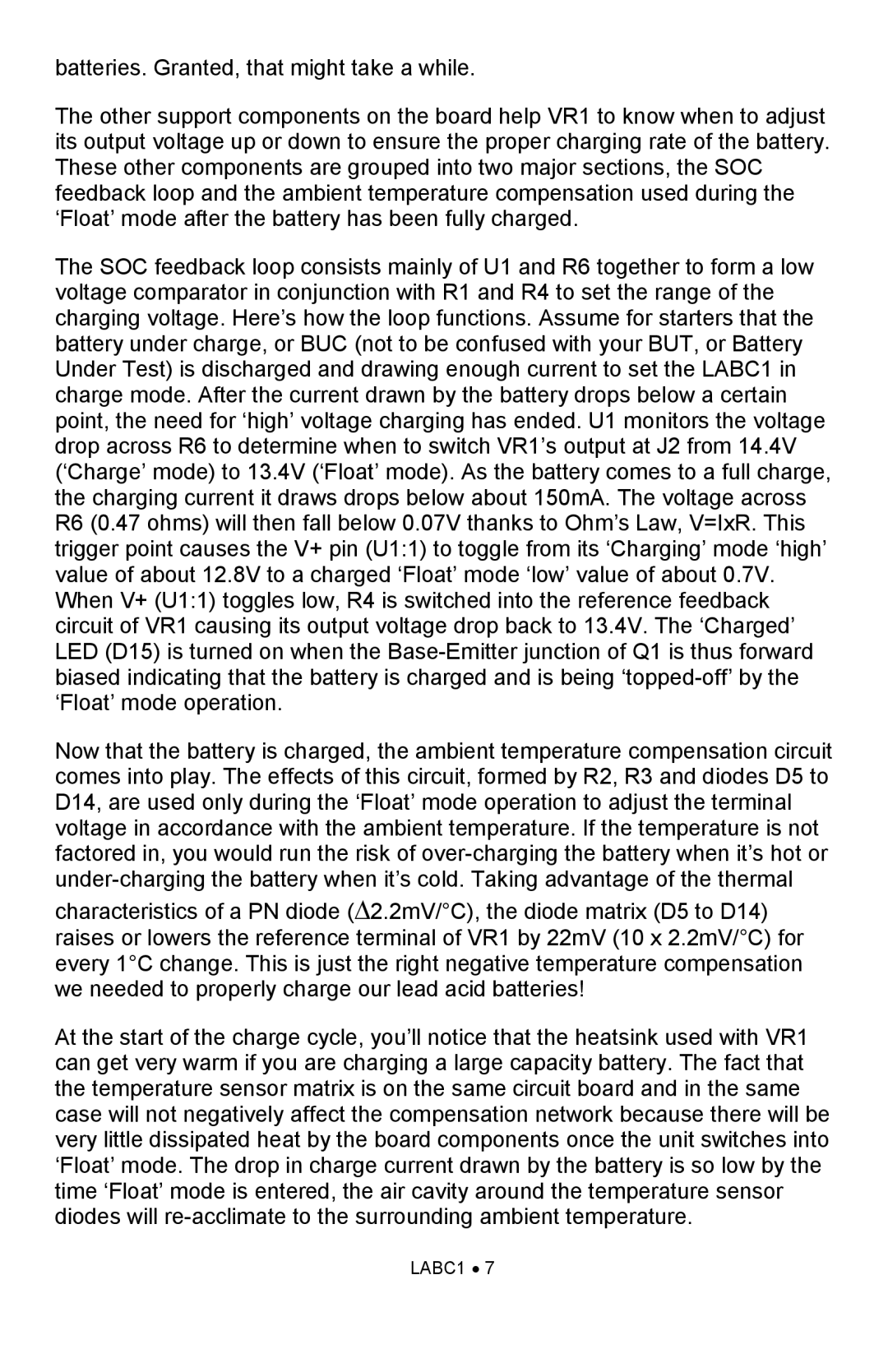batteries. Granted, that might take a while.
The other support components on the board help VR1 to know when to adjust its output voltage up or down to ensure the proper charging rate of the battery. These other components are grouped into two major sections, the SOC feedback loop and the ambient temperature compensation used during the ‘Float’ mode after the battery has been fully charged.
The SOC feedback loop consists mainly of U1 and R6 together to form a low voltage comparator in conjunction with R1 and R4 to set the range of the charging voltage. Here’s how the loop functions. Assume for starters that the battery under charge, or BUC (not to be confused with your BUT, or Battery Under Test) is discharged and drawing enough current to set the LABC1 in charge mode. After the current drawn by the battery drops below a certain point, the need for ‘high’ voltage charging has ended. U1 monitors the voltage drop across R6 to determine when to switch VR1’s output at J2 from 14.4V (‘Charge’ mode) to 13.4V (‘Float’ mode). As the battery comes to a full charge, the charging current it draws drops below about 150mA. The voltage across R6 (0.47 ohms) will then fall below 0.07V thanks to Ohm’s Law, V=IxR. This trigger point causes the V+ pin (U1:1) to toggle from its ‘Charging’ mode ‘high’ value of about 12.8V to a charged ‘Float’ mode ‘low’ value of about 0.7V. When V+ (U1:1) toggles low, R4 is switched into the reference feedback circuit of VR1 causing its output voltage drop back to 13.4V. The ‘Charged’ LED (D15) is turned on when the
Now that the battery is charged, the ambient temperature compensation circuit comes into play. The effects of this circuit, formed by R2, R3 and diodes D5 to D14, are used only during the ‘Float’ mode operation to adjust the terminal voltage in accordance with the ambient temperature. If the temperature is not factored in, you would run the risk of
characteristics of a PN diode (∆2.2mV/°C), the diode matrix (D5 to D14) raises or lowers the reference terminal of VR1 by 22mV (10 x 2.2mV/°C) for every 1°C change. This is just the right negative temperature compensation we needed to properly charge our lead acid batteries!
At the start of the charge cycle, you’ll notice that the heatsink used with VR1 can get very warm if you are charging a large capacity battery. The fact that the temperature sensor matrix is on the same circuit board and in the same case will not negatively affect the compensation network because there will be very little dissipated heat by the board components once the unit switches into ‘Float’ mode. The drop in charge current drawn by the battery is so low by the time ‘Float’ mode is entered, the air cavity around the temperature sensor diodes will
